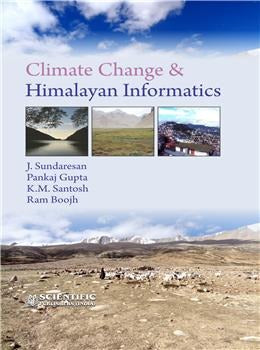Climate Change & Himalayan Informatics
Climate Change & Himalayan Informatics is backordered and will ship as soon as it is back in stock.
Couldn't load pickup availability
Genuine Products Guarantee
Genuine Products Guarantee
We guarantee 100% genuine products, and if proven otherwise, we will compensate you with 10 times the product's cost.
Delivery and Shipping
Delivery and Shipping
Products are generally ready for dispatch within 1 day and typically reach you in 3 to 5 days.
Authors: J. Sundaresan, P. Gupta, K.M. Santosh, R. Boojh
ISBN: 9788172338466
Book Format: Hard Bound
Language: English
Edition: 1
Imprint: Scientific Publishers
Year: 2013
Pages: 197
Size (Inch): 6.50 X 9.75
Weight: 480 Gms
Book Description:
Climate Change Himalayan Informatics delves into the profound impact of climate change on the Himalayas, a region undergoing rapid urbanization and facing numerous environmental challenges. The book provides a dedicated analysis of the geodynamic processes and climate change imprints within this fragile ecosystem.
Key topics covered include:
-
Glacier Mass Balance: The mass balance of glaciers in the Chandrabhaga region is explored, offering predictive tools for understanding spatially distributed estimates of glacier mass balance.
-
Natural Hazard Identification: The book highlights tools for identifying and locating multiple natural hazards, particularly landslides and glacial lake outburst floods (GLOFs), exacerbated by climate change in the Himalayas.
-
Socio-Economic Impact: The book examines how climate change affects cropping strategies by mountain communities, providing socio-economic perspectives on how people adapt to a changing environment.
-
Drought-Tolerant Plant Species: Information is provided on plant species in the Himalayas that exhibit greater tolerance to drought, an important consideration in the context of global warming.
-
Climate Change Indicator Species: A specific plant species is identified as an indicator of climate change for the Eastern Himalayas.
-
Ecosystem Impacts: The book discusses the climatic impacts on various regional ecosystems of the Himalayas, highlighting their implications on the ecological, cultural, and socio-economic processes of the region.





